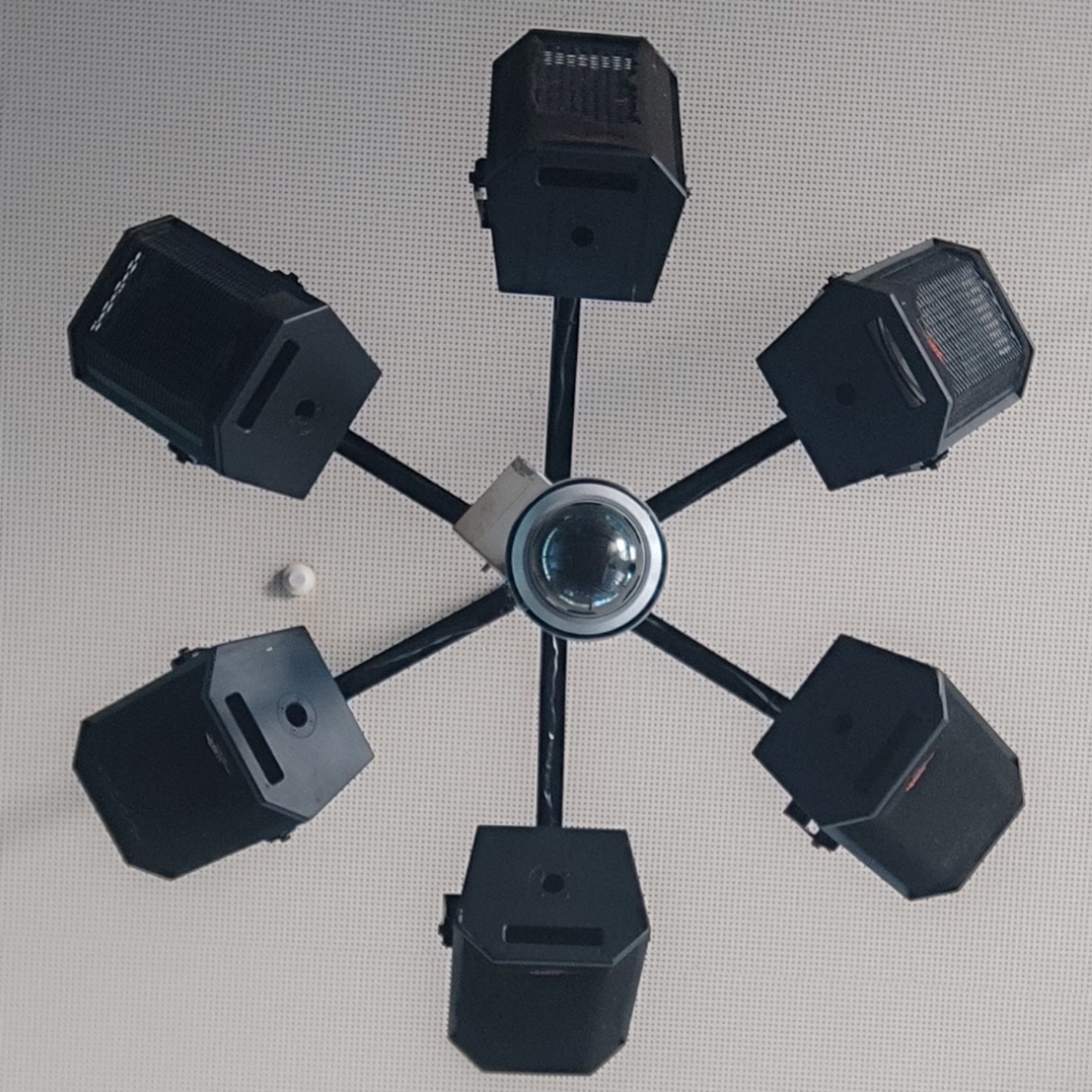I’m already hosting pihole, but i know there’s so much great stuff out there! I want to find some useful things that I can get my hands on. Thanks!
Edit: Thanks all! I’ve got a lil homelab setup going now with Pihole, Jellyfin, Paperless ngx, Yacht and YT-DL. Going to be looking into it more tomorrow, this is so much fun!
For me, it was a wiki/knowledge base - I’ve had dozens over the years as I’ve tried to find the ‘right’ one, but I’m currently a fan of @bookstack@fosstodon.org. My brain’s not always the most reliable, and so my wiki becomes my ‘external brain’. A lot of people are using things like Obsidian/Notion/etc in the same way.
I might decide to try this for bookmarks. My current problem is I collect all info in various bookmarks. Like open source tools > media/office/bookmarks , royaltyfree > music/pictures/movies, cloud services > storage/VPS/dedicated, temp shares > files/images/video etc etc etc
It ends up with a lot of duplicates because some things fit into multiple categories, I’m at over 3k bookmarks now.
I am curious if it might work well to use bookstack for that instead. Thank you for the idea.May I suggest you benotes for that?
Really happy with it, hast folders, subfolders, tags and search. Still on development, but I like it enough to recommend it every time someone looks for a way to sort their bookmarks
Thanks! I actually did briefly try it as a Keep notes replacement, but decided against it purely because the checklist function does not actually remove the item from the list so it doesn’t work as a shopping list, so the wife would never use it!
I did not consider the potential of using it to store bookmarks. I’ll give it another look. Thanks!
I’m using obsidian at the moment, but bookstack looks pretty nice. I’ll have to look at that more and see if it would be a good replacement. Can I ask what made bookstack your current driver?
The shelves->books->pages metaphor sort of works for me. It lets me categorise my thoughts in a way that works for me. The lead dev is also really communicative, and it’s been really easy to deploy and run. I’ve been meaning to try and find some time to contribute some hacks to it.
Ideally, I’d love a way to make Bookstack and Obsidian work together…
The ability to insert flow charts on the go with the draw.io integration built in is amazing for technical documentation.
Ah yeah that makes sense. That organization would be slick, since obsidian feels like it’s all over the place unless you micromanage backlinks. I’ll look some more into it once I wrap up with Homepage. Another post got me started on that lol
That’s such a good idea. I may have to look into this. Thank you
a tor exit node :P /s
These are some things I recommend. Vault warden. (paswoord manager). Jellyfin. (a great web based media player)… Portainer
Hi Average Joe 👋 just start with a simple PiHole installation. From here on, the options are endless
TandoorRecipes is a great little recipe-hosting service, and it’s available as an app on Unraid. No more saving recipes in my notes app, I actually have nicely-formatted ingredient lists and instructions.
Also interested, after all the *arr apps I would say:
- EDIT: I forgot about PiHole !
- IRC bouncer - ZNC for example
- Minecraft (fabric with phosphor and sodium plugins for performance)
- Picoshare or Sharry (eikek/sharry on gh)
- Libreddit
Also a neat web tool for messing with data there is cyberchef.
Thanks to this post I realized there is really only one or two services I really use or need haha (ZNC and the other one is a web tool for a popular ttrpg ->pm).
All of this and more is inside docker containers so if you don’t know that I would highly recommend it.
Meth labs. That will definitely change anyone’s life.
Let me throw in Paperless NGX, https://github.com/paperless-ngx/paperless-ngx
PhotoPrism is a really big one for me. You will need some computing power and storage, but being able to run your own Google Photos is amazing. Including AI features like object and face detection (if you want).
For me nextcloud was the biggest gamechanger. A raspberry pi and a SSD and suddenly I didn’t have to store anything at Google drive anymore. And it’s really beginner friendly, especially when using NextcloudPi
Portainer - For docker containers.
AdGuard Home on 2 separate Raspberry Pi Pico W.
HomeAssistant on its own hardware. Home automation
SearXNG - private search.
Whoogle - private search.
Shaarli - Bookmarks.
youtube-dl - downloading videos.
PaperlessNGX - document storage.
Trilium Notes - notes app
These are the ones I can’t live without. All docker containers running on a NAS.
Your own nextcloud instance. Then move everything that is saved at Google over to your own server.
Calenders, Filesync, Contacts sync with android works really nice.
Knowing my data is stored only on my own devices and google doesn’t know more about me than I do is a nice feeling.
deleted by creator
Just got to have a backup. I have children so for pictures anything Google is just not doable. Nextcloud on my home NAS, nightly backup to Amazon Glacier (super cheap to store because it’s expensive to retrieve) in case of a catastrophic failure (like fire). Every month or so backup the files to an external drive.
Yes. Hetzner’s offering is reliable and not too expensive. You do trade off a lot of the privacy and flexibility though.
Oh this sounds amazing. Do you have a link with more info so we can check it out?
If you do this make sure you have a good backup solution in place. Don’t be like me running a nextcloud instance on a single disk server and when the disk died I lost everything. I’ve since moved to a parity based backup solution.
Yikes, thanks for the tip. That would be terrible! Do you have some documentation or example of the backup solution you now use?
I run SnapRAID on top of Drivepool on a windows machine. You could use SnapRAID with something like mergerfs on Linux if you wanted. I have two pools (10 data, 3 parity) and a (3 data, 1 parity). With snapraid I run pool syncs nightly and scrub (~3% nightly to cover the entire array monthly).I tried unRAID first and liked it, but there were some issues with my LSI controller resulting in poor write speed, I was never able to figure it out. I’ve been running the Drivepoo/SnapRAID combination now for ~6 years or so. I’ve had to rebuild two drives from parity in that time and it was painless (a config file edit and two commands).
Nextcloud: https://nextcloud.com/
Setup with Docker: https://github.com/nextcloud/docker
Thank you!
Just make sure to keep a backup. Google has them (effectively), you should too.
My biggest fear of hosting my own important data is losing it to some hardware failure. Currently I mitigate this issue by mirroring my NAS data to onedrive (with encryption)
While I like this suggestion I’d be careful if you’re just getting started: you don’t want to end up losing data if this is your only copy. Make sure to have proper backups if you have data you can’t afford to lose. You could even encrypt it and upload it to Dropbox/google drive
Joplin.
You don’t strictly have to self host it but it’s gotten pretty good with a WYSIWYG editor now and everything.
If you spend some time learning how docker/podman works you’ll be able to host practically anything!
Nextcloud to replace Google drive/docs. Jellyfin or plex for media. The arrs to aquire media (if you have the patience). A blog? A game server to play with friends.
I suggest using docker and docker-compose as it makes everything way easier. It does still take time and it can be frustrating but it is very rewarding.
Crosspost from the duplicate
Years ago I selfhosted Nextcloud and found this interaction just as clunky as using google drive. Now I’m just using SFTP which has much less overhead and it integrates beautifully with just about any file manager on Linux. Then again, using it on windows is a pain as far as I know.
Do you happen to know if it can be installed on Docker for Windows?
probably, docker is docker, should work independently of the host OS
Thanks, figured as much. My main issue is Docker is annoying on Windows and trying to give it sufficient storage and configuring that with Docker has always been something I just never figure out.
While there is a docker version for windows (server I believe) the last time I checked it could only run windows containers (so basically none). The Linux support never got out of beta. I think now they are just saying use windows subsystem for Linux (WSL) for that.
I have been quite happy with docker on a Linux virtual machine hosted on a windows server (I know not the “normal” way to do it but since I am a windows Server admin at work it worked best for me).
The reason that you cannot run Linux containers on windows by default is that docker is no full fledged virtualization Software it sill uses the kernel of the host system. And a Linux container needs a Linux host system.
WSL2 is Linux on a virtual machine. Docker for Windows is running in a VM.
I’m also a weirdo though, I’m using podman instead (and may switch to nerdctl).
I think there are two “Docker for Windows” one is docker desktop used on windows client OS where you can switch between windows and linux containers. This is the one where it runs a VM for the Linux containers but it’s designed for development and not so much for hosting (at least I have not get it to work for this)
And there is the docker that’s included in Windows Server wich can only run windows containers but those natively and suitable for hosting dotnet web services on scale.
Never hears of nerdctl. What is the feature that would make it better than podman for you?
I using and deploying to kubernetes. Nerdctl has a docker API but it’s completely backed by k8s. So, for regular dev I’d just need a k8s cluster and not k8s + something else to build the images and push them into the k8s image repository.
Here is a forum thread from the docker forum. You might find some valuable insights there: https://forums.docker.com/t/docker-run-linux-container-in-windows-2019/128196
Docker is definitely worth the time investment.
If OP wants to go one level deeper: Ansible.
Does ansible make sense for a single server? I like the concept but I don’t know if It makes sense for my purpose.
It makes sense in terms of reproducibility.
Imagine if your server gets compromised, you accidentally break it, or you just want to move to a cheaper provider or a different server. Do you want to have to tweak it all over again, and fix bugs that you figured out how to fix 6 months ago and you don’t remember?
I’d rather have some yaml files that do it for me. And it’s a new skill as well.
That makes sense thanks. I did have trouble figuring out where to start with ansible, do you have any advice about that?
You’re welcome!
I’m still an ansible newbie myself. I first heard about it in this video; https://m.youtube.com/watch?v=Z7p9-m4cimg&pp=ygURV29sZmdhbmcgYW5zaWJsZSA%3D
Then I just figured out by googling and reading the docs / stack exchange.
I started by doing something simple, e.g. write an ansible playbook to update a raspberry pi on my network. Then went from there to launch a small VPS, googling each step that I’d normally do to configure a server, and run them all one after the other on ansible.
I love Wolfgang. His videos are so high quality














